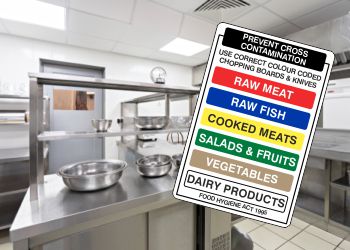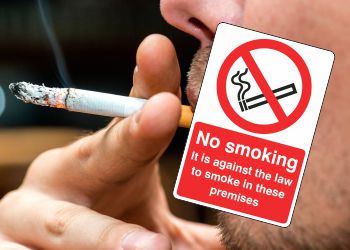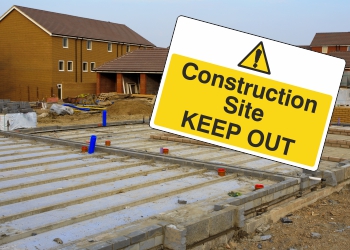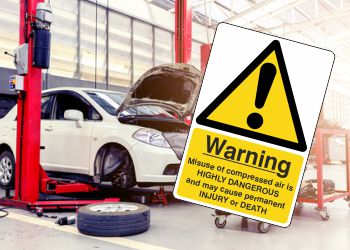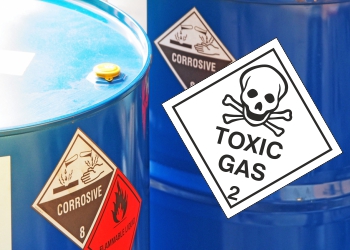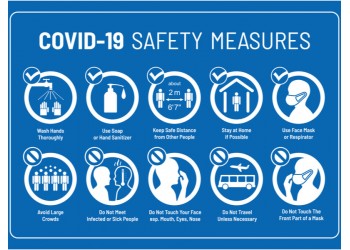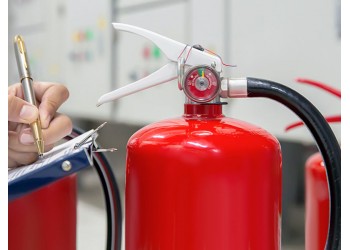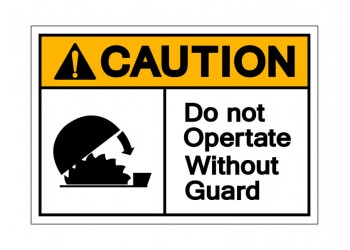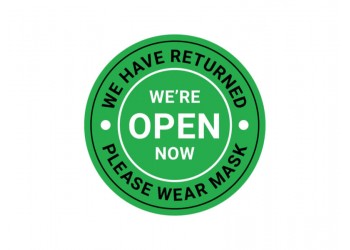Catering and hospitality environments present a unique range of hazards to their owners. Being places where food is stored, prepared and served, it is vital that the risks posed are minimised as much as possible. Not only does this protect the health of your workers but also every single customer and your business itself. As a restaurant, cafe or general catering manager, it is vital that you understand just how significant the right signs can be for your business. This guide delves into your responsibility and how signs can support your work with these.
What are the main health and safety issues presented in catering?
Every single catering environment will have a unique range of hazards that take priority. This will largely depend on the nature of your activity. For example, kitchens that produce large quantities of hot soup products are likely to present different hazards to a sandwich bar. However, there are a range of hazards regularly seen which include:
- Slipping, tripping and falling over
- Lifting heavy items and manual handling
- Burns caused by hot surfaces
- Dermatitis and other skin conditions
- Cuts from sharp objects
- Contaminated foods
How do I identify the hazards that impact my catering business the most?
It is vital, as with all health & safety initiatives, to first undertake a detailed risk assessment. This will provide a clear understanding of your unique environment and give you direction on how to prevent injury. A risk assessment should cover the basic things such as closing cupboard doors and cleaning up spills to more specific actions such as storing bespoke equipment appropriately. There are many example risk assessments available online that will help you keep in with the law. And, on this note, it is important to note that the law does not require you to fully eliminate all risks. You are, however, required to protect people as far as ‘reasonably practicable’, creating a working environment that understands and avoids hazards.
The Health and Safety Executive, provides a number of examples such as this one for small cafes and this one for use in pub kitchens.
What legislation covers the catering industry?
Catering and food premises must abide by the Health and Safety at Work Act 1974. More information on this can be found here.
How do signs support legal requirements in the catering industry?
There is a wide range of catering-specific signs that are designed for the catering industry. And, according to The Health and Safety (Safety Signs and Signals) Regulations of 1996 states that safety signs are required where there is a risk to employee safety. They need to be easy to read, easy to find and identify everything from safeguards, hazards, prohibited actions and directions for safety measures. It is vital that you only use signs where necessary and do not saturate the workplace with too many. This can become confusing for workers, guests and visitors.
Let’s look at the different signs available that help to prevent some of the hazards mentioned above.
Trips/Slips/Falls
Spilled food and equipment being left haphazardly are two of the main reasons why trips, slips and falls occur. Signs can be used to remind people of the need to clean up after themselves and minimise the chances of others becoming injured. Our ‘Clean Up Spillages Sign’ is the perfect example – following British Standard specifications and available in a number of different formats.
Hot surfaces
Catering environments present a large number of opportunities to get burnt and injured by hot surfaces. Whether this is from boiling water used during cooking or cleaning through to hobs, ovens and grills being left on, the right sign will inform people of this risk instantly. The choice is vast with options such as this simple ‘Caution Hot Surface Do Not Touch and the ‘Caution Very Hot Water Sign’ which fit the needs of many environments’.
Cuts
Catering brings with it a range of equipment, including knives and other sharp objects needed to glide through food. And, unfortunately, this also increases the chance of cuts and injury. Signs can be used to remind people of the need to be cautious and make them aware of how serious these sorts of hazards can be. There are many different signs available to support this. Our ‘Use Knives Safely Sign’ is a comprehensive option for businesses that have high staff turnover. It advises people how to use sharp objects safely along with what not to do and which precautions to take. We also have a ‘The Safe Use of Knives’ sign which guides users through the most professional way of using knives to reduce the change of cuts. And, more specific signs such as the ‘Slicing Machine’ sign offers direction on correct use when it comes to dangerous machines that can cause cut injuries.
Contaminated Food
Perhaps the most industry specific hazard out there, it is vital that working catering businesses minimise the risk of contaminated food. This can take the form of ensuring raw meats are kept away from fruits and vegetables through to making sure employees wash their hands after using the toilet. These hazards should be clearly highlighted to every employee and training offered to make sure everyone takes active steps to minimise them. Examples of this include the ‘Do Not Store Raw and Cooked Food Sign’, ‘Keep Cuts and Abrasions Covered Sign’ and ‘All Food Must Be Covered and Dated Sign’.
How do I know the right signs for me?
Finding the right grouping of signs is essential to ensuring your workplace stays legally compliant. Take into account the most significant hazards highlighted through your risk assessment. If you notice the risk of cuts is higher than that of burns, choose signs that minimise this hazard and place them close to the most accident prone areas. If you require additional support, the team here at Lasting Impressions are experts when it comes to professional signs for your industry. Get in touch and we’ll help guide you towards the right signs for your business today.
